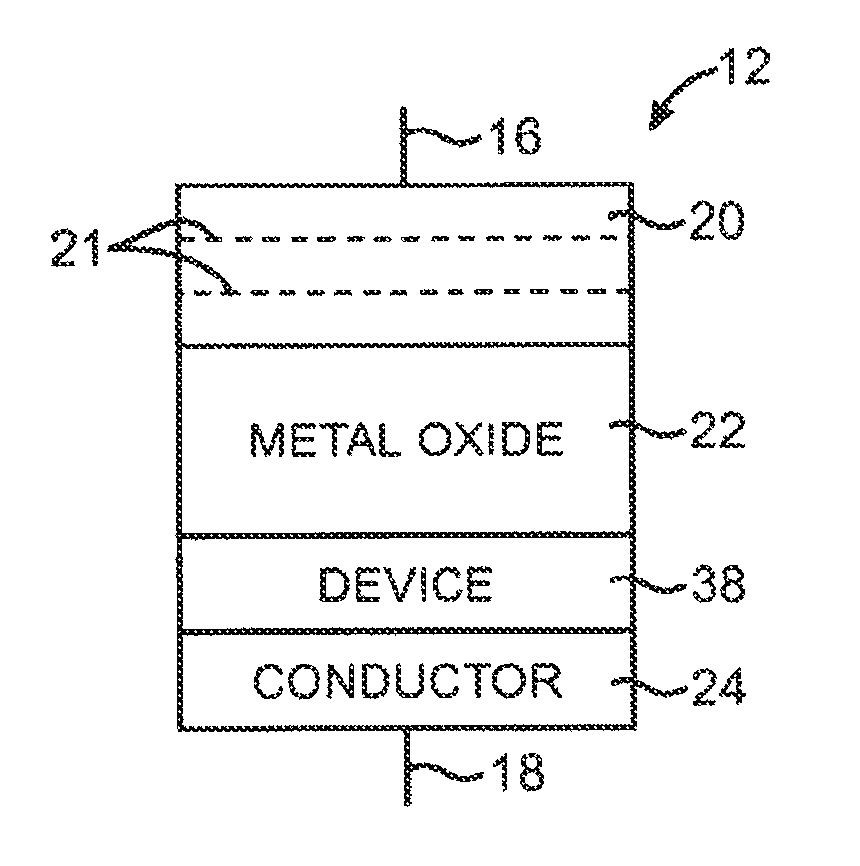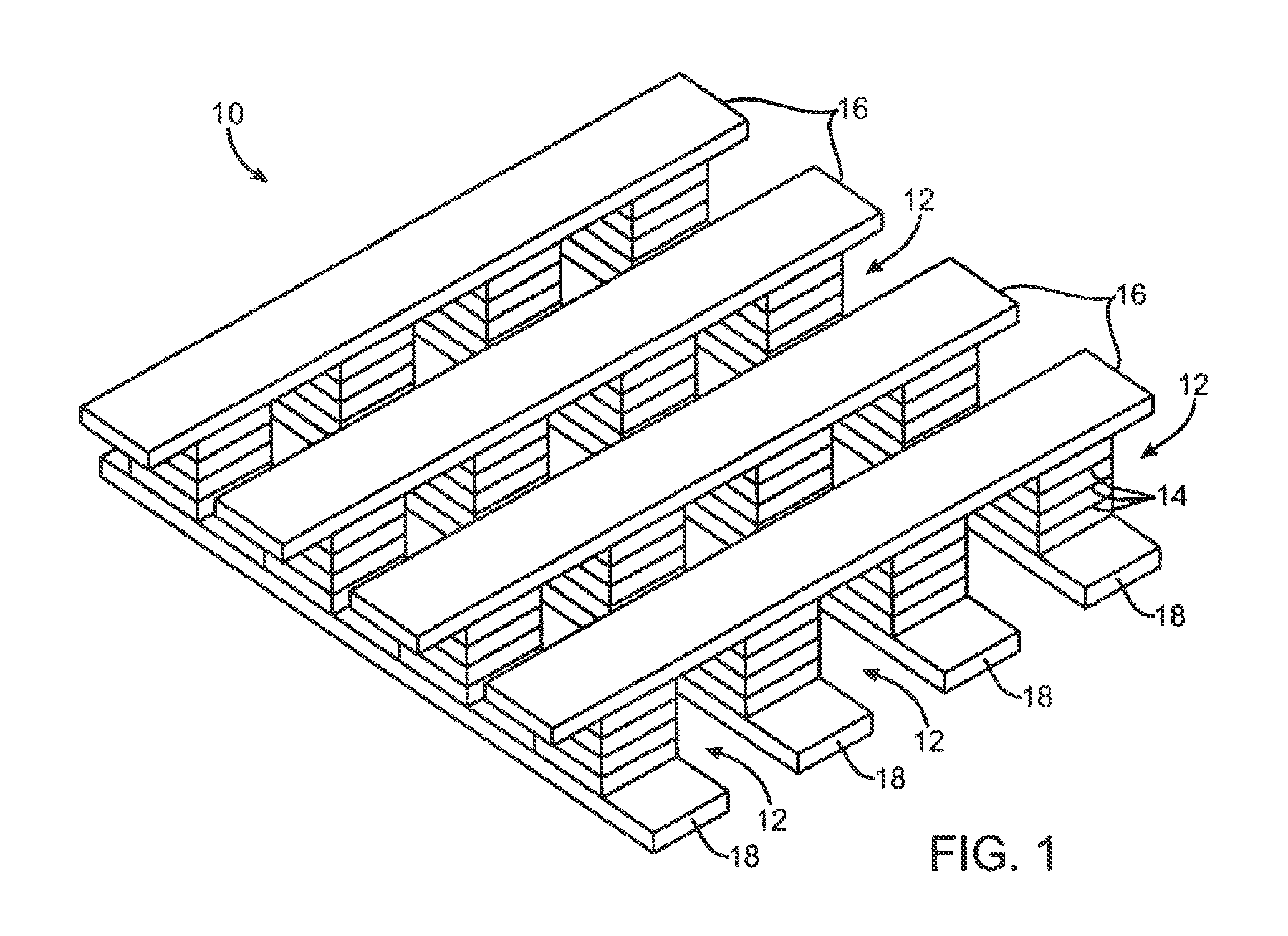Transition metal oxide bilayers
a metal oxide bilayer and transition metal oxide technology, applied in the direction of bulk negative resistance effect devices, electrical equipment, semiconductor devices, etc., can solve the problem of limiting the areal density of a reram memory array based on the devi
- Summary
- Abstract
- Description
- Claims
- Application Information
AI Technical Summary
Problems solved by technology
Method used
Image
Examples
example 1
Sub-Oxide Compositional Analysis
[0079]Tantalum oxide layers of varying composition were made by dc reactive sputtering in a locally built chamber as described above using either 4.3% or 5.4% O2 in Ar (generally at 1-5 mTorr and 100-300 W). (All relative concentrations are set as volume flow rates such as standard cubic centimeters per minute [sccm].) These layers were expected to have substoichiometric composition. The layers were analyzed using XPS. The spectra of two samples are shown in FIGS. 11A and B, respectively, together with the peaks associated with a least-squares fit of possible constituents. The overall fit to the data is very good. Table 1 summarizes the compositional analysis:
[0080]
TABLE 1% O2 in Ar carrier gas% Ta2O5% TaO2% TaO4.3831075.486 86
[0081]The presence of TaO2 and TaO sub-oxides was confirmed. It is also apparent that the amount of sub-oxide present in the deposited layer can be tuned by adjusting the O2 concentration in the carrier gas.
[0082]Three additiona...
example 2
Deep UV Spectral Ellipsometry Measurements
[0085]The samples described in Example 1 were further analyzed using deep UV spectral ellipsometry. Each sample was analyzed before and after annealing for 1 min at 750 C in an Ar / H2 atmosphere. The results are shown in FIGS. 12A and B and 13A-D. ‘n’ and ‘k’ are the refractive index and extinction coefficient respectively.
[0086]As can be seen in the figures, the samples made with O2 concentrations below 10% show significant absorption at lower energies, indicative of metallic or low band-gap suboxide phases. These are reduced but not eliminated after anneal. At higher O2 concentrations these lower energy absorptions are absent.
example 3
Deposition Rate
[0087]In order to controllably manufacture the very thin layers (several atomic thicknesses) required to make the near-stoichiometric Ta2O5-δ resistive switching layer, one must be able to provide a suitably slow deposition rate so that thickness can be controlled by process time. FIG. 14 shows that such control is indeed possible. The data are for 100 W power in a dc reactive sputtering process as a function of the O2 concentration in the Ar / O2 atmosphere. While the deposition rate for the lower O2 concentrations is significantly higher than for higher concentrations, all rates are acceptably low to allow precise thickness control.
PUM
 Login to View More
Login to View More Abstract
Description
Claims
Application Information
 Login to View More
Login to View More - R&D
- Intellectual Property
- Life Sciences
- Materials
- Tech Scout
- Unparalleled Data Quality
- Higher Quality Content
- 60% Fewer Hallucinations
Browse by: Latest US Patents, China's latest patents, Technical Efficacy Thesaurus, Application Domain, Technology Topic, Popular Technical Reports.
© 2025 PatSnap. All rights reserved.Legal|Privacy policy|Modern Slavery Act Transparency Statement|Sitemap|About US| Contact US: help@patsnap.com



